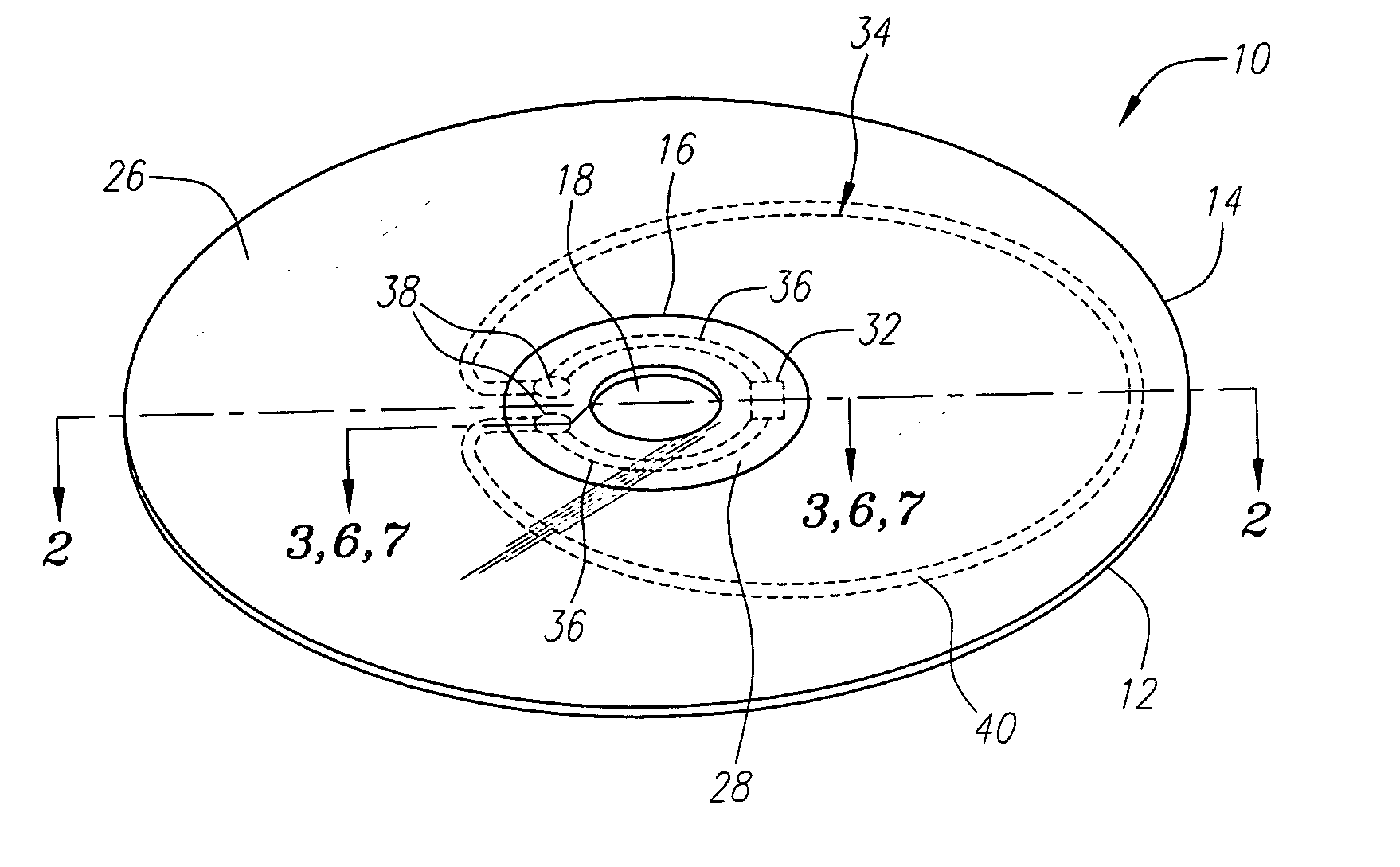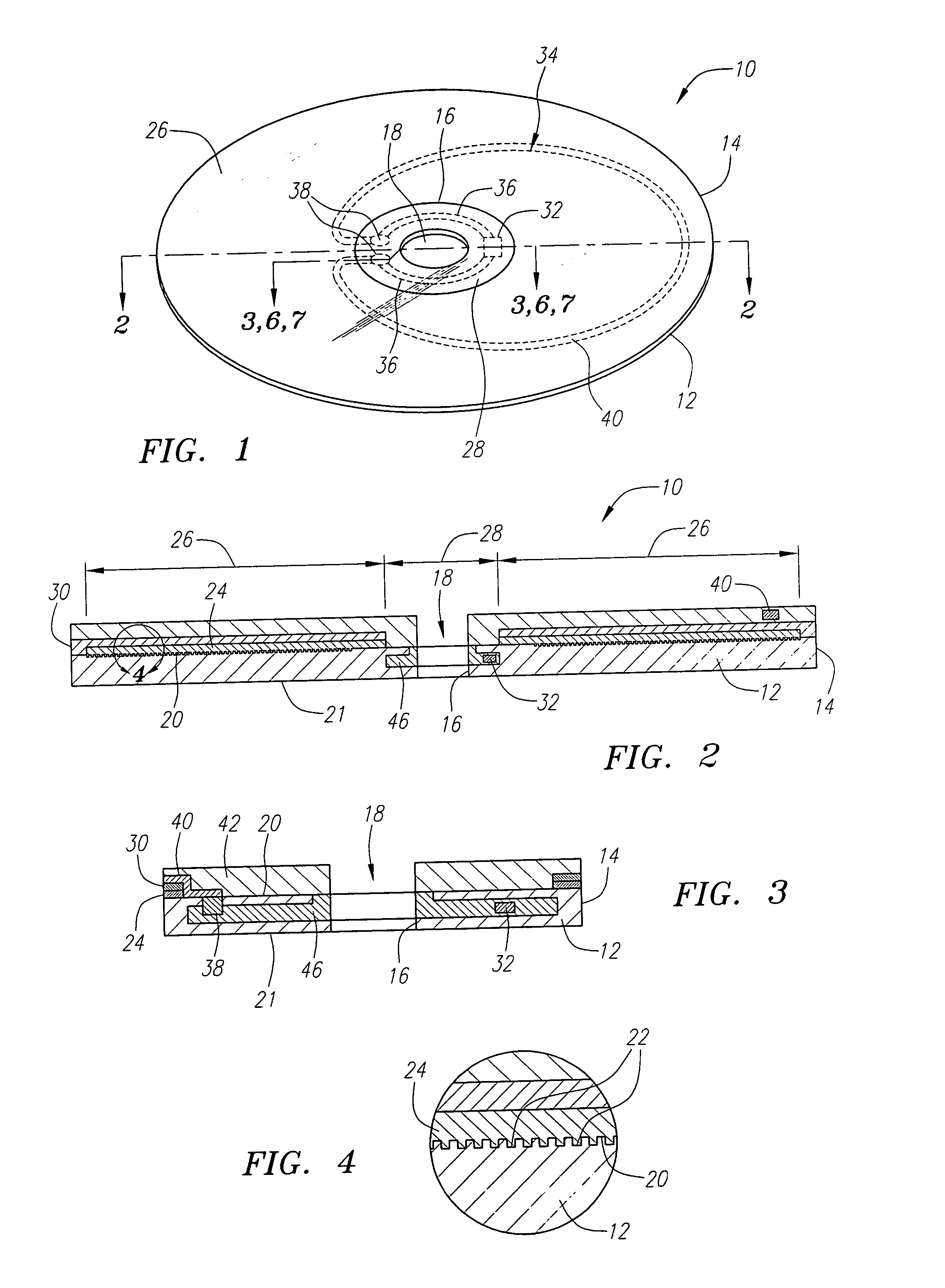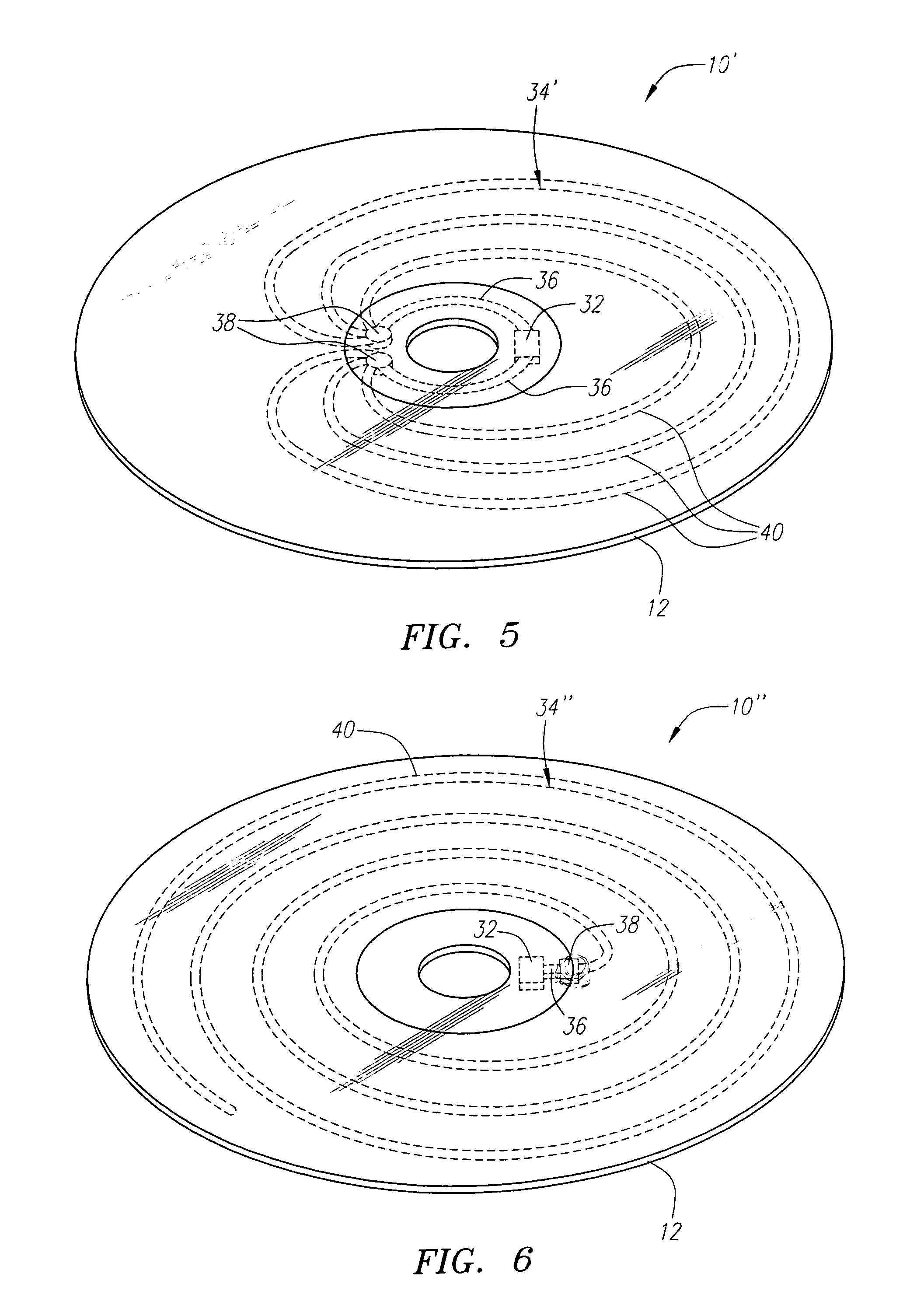Optical disk and method of integrating a high gain RFID antenna
a high-gain, optical disk technology, applied in the direction of mechanical recording, burglar alarm mechanical actuation, instruments, etc., can solve the problems of not being able to place rfid readers in close proximity to most, if not all, of the physical media, and disrupting the delicate dynamic balance needed, so as to achieve the effect of easy incorporation into the optical disk
- Summary
- Abstract
- Description
- Claims
- Application Information
AI Technical Summary
Benefits of technology
Problems solved by technology
Method used
Image
Examples
Embodiment Construction
[0033] Preferred embodiments of optical disks constructed in accordance with the present inventions will now be described. The optical disks described herein carry radio frequency identification (RFID) technology that can be easily and cheaply incorporated into standard optical disk fabrication processes and is capable of working at a range of a few millimeters, e.g., to prevent counterfeiting of the optical disks when detected by an radio frequency (RF) reader contained within an optical disk driver, or at a range of several feet, e.g., for tracking purposes during the supply of packaged optical discs. For the purposes of this discussion, an optical disk refers to any disk that carries a data region that can be optically read, such as any of the Compact Disk (CD) family of optical disks, including, but not limited to, CD-ROM, CD-R, and the like, as well as the Digital Video Disk (DVD) family of optical disks, including, but not limited to, DVD-ROM, DVD-R, and the like. Currently, t...
PUM
 Login to View More
Login to View More Abstract
Description
Claims
Application Information
 Login to View More
Login to View More - R&D
- Intellectual Property
- Life Sciences
- Materials
- Tech Scout
- Unparalleled Data Quality
- Higher Quality Content
- 60% Fewer Hallucinations
Browse by: Latest US Patents, China's latest patents, Technical Efficacy Thesaurus, Application Domain, Technology Topic, Popular Technical Reports.
© 2025 PatSnap. All rights reserved.Legal|Privacy policy|Modern Slavery Act Transparency Statement|Sitemap|About US| Contact US: help@patsnap.com



